S'sonic
Stealth
Menu
A free template by Lucknowwebs.com for WYSIWYG WebBuilder 8
Nigel G Wilcox
Powered by Sispro1-S
Paragon Of Space Publication
© Copyright Reserved - United Kingdom
Ideal Screen Composition 1024 x 768
SITEMAP
PSEUDO SCIENCE
SCIENCE RESEARCH
ABOUT
Desk
Supersonic
Stealth
Study
Menu
MAIN INDEX
Fastest Air Planes
Space
Transport
Menu
F/A-18E/F Super Hornet
Role: Carrier-based multirole fighter
National origin: United States
Manufacturer: McDonnell Douglas, Boeing Defense, Space & Security
First flight: 29 November 1995
Introduction:1999
Status: In service
Primary users: United States Navy, Royal Australian Air Force
Produced: 1995-present
Number built: 500 as of April 2011
Program cost: Total procurement: US$48.09 billion (through FY2011)
Unit cost: US$70.5 million (2017 flyaway cost)
Developed from: McDonnell Douglas F/A-18 Hornet
Variants: Boeing EA-18G Growler
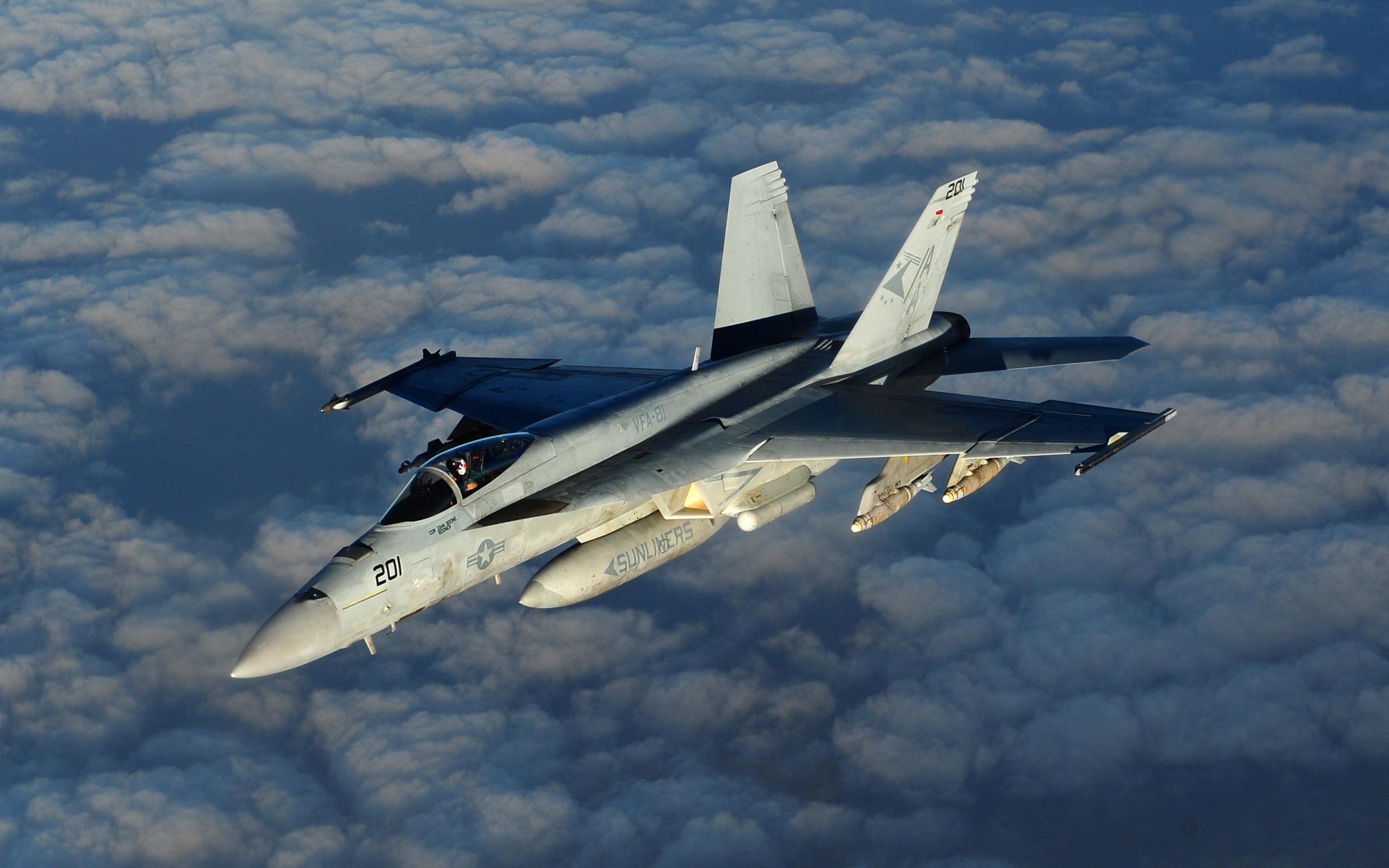
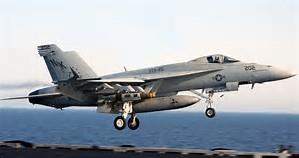
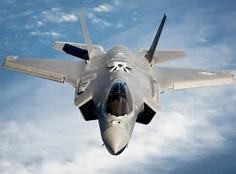
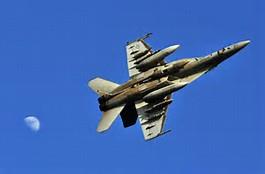

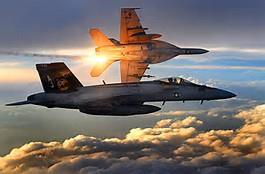
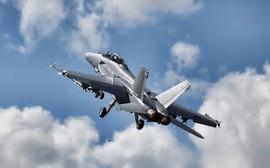
With the United States Navy struggling to make up a shortfall in its strike fighter inventory, the future looks bright for Boeing’s F/A-18E/F Super Hornet and EA-18G Growler.
The Navy plans to order at least 80 additional Super Hornets over the next five years including 14 jets in the fiscal year 18 budget request-and there could be more to come.
Moreover, as it is becoming increasingly apparent that the F/A-18E/F will be serving in the fleet until at least 2040, the Navy has requested funding for an advanced Block III version of the venerable Super Hornet in the 2018 budget. Many of those modifications are also likely to be used onboard the EA-18G Growler variant too.
The Navy needs enough aircraft in its inventory to have the capacity to fill out its air wings-particularly if the size of the fleet is increased.
“Boeing thinks they probably need a few more airplanes in order to have the right number of tails to last out into the 2040s given the current force structure,” Dan Gillian, Boeing’s F/A-18 and EA-18G program manager told The National Interest.
“So we weren’t surprised to see the ten Super Hornets added as the number one item on the FY18 unfunded priorities list.”
Boeing is planning to build the F/A-18 at a rate of two jets per month-slower than it has historically-but the Navy is also purchasing fewer jets per year than during the program’s heyday in the 2000s. But given the projected Navy buy, a total of 80 new Super Hornets should keep the production line open into the mid-2020s.
However, Boeing sees the need for more foreign and domestic F/A-18s, which Gillian said could drive the production rate back up. Indeed, the company projects that the Navy could order as many as 150 additional Super Hornets and 30 Growlers in total over the next several years in order to fill out its air wings.
Moreover, if Trump’s defense expansion materializes, the Navy might need even more aircraft.
Meanwhile, Boeing is working with the Navy to extend the life of its existing Super Hornets with the Service Life Modification Program. The SLMP will extend the F/A-18E/F airframe’s life from a projected 6000 hours out to 9000 hours.
“That’s another way we can help them have the right capacity for the future,” Gillian said.
The new Super Hornets coming off the production line in fiscal year 2019 could be built in an advanced Block III configuration-should the Navy want to get the ball rolling that quickly.
“We think we can cut Block III into production with the fiscal year ’19 airplanes,” Gillian said.
“We can also take the Block III capabilities and retrofit them into existing Block IIs the Service Life Modification Program. With those two programs, new production and SLM, we can build the fleet inventory of Block IIIs quickly.”
With the Navy officially requesting funding this year for the Block III, an advanced Super Hornet is no longer a notional project. It will-if Congress manages to pass a budget-eventually become a reality if current plans hold.
“We think the Block III nomenclature is significant-we worked with the Navy to get alignment on what those attributes are,” Gillian said.
“Block III, we’re excited to see, is funded in the FY18 budget-just under $265 million to support the development of the Block III capabilities.”
Unlike Boeing’s previous Advanced Super Hornet concept that made its debut in 2013, the new Block III aircraft is a more modest proposition that is designed to support the rest of the air wing including the Lockheed Martin F-35C Joint Strike Fighter, Northrop Grumman E-2D Advanced Hawkeye and the EA-18G Growler under the service Naval Integrated Fire Control Counter Air construct (NIFC-CA).
The Block III takes the existing upgrade path for the Super Hornet-including biennial hardware and software upgrades-and expands upon those. Indeed, some of the existing planned upgrades to the jet’s powerful Raytheon AN/APG-79 active electronically scanned array radar, AN/ALQ-214 Integrated Defensive Electronic Countermeasures (IDECM) Block IV suite and the Lockheed Martin AN/ASG-34 Infrared Search and Track pod are part of the Block III package.
“That IRST sensor is a key capability Super Hornet brings to the carrier air wing that nobody else has,” Gillian said.
“It is a counter-air, counter-stealth targeting capability.”
Boeing and Navy plan to add five additional new features to the Super Hornet to round out the overall Block III package. That includes a set of conformal fuel tanks (CFTs) that will fit atop the F/A-18E/F’s fuselage, which would extend the Super Hornet’s range by roughly 120 nautical miles. The Block III aircraft would also come off the production line with a 9000-hour life airframe right from the outset. Boeing will also add some improvements to the Super Hornet’s low observables technology-though not as extensively as their 2013 effort that reduced the F/A-18E/F radar cross section by more than half.
“Buying more stealth didn’t make much sense,” Gillian said.
“Buying a networked fighter made a ton of sense.”
The Block III will also have a powerful new computer in the form of the Distributed Targeting Processor- Networked (DTP-N) and powerful high-band connectivity in the guise of the Tactical Targeting Network Technology (TTNT) Internet protocol-based datalink. Additionally, the jet will receive a new advanced cockpit system with a 10-by-19 inch display and new crew interfaces in both cockpits.
“It’s about making the Super Hornet a smart node on the Navy’s network,” Gillian said.
“We think these collection of changes we’ve made in Block III help us to be a networked
The National Interest -Dave Majumdar
June 22, 2017
The Boeing F/A-18E and F/A-18F Super Hornet are twin-engine carrier-capable multirole fighter aircraft variants based on the McDonnell Douglas F/A-18 Hornet. The F/A-18E single-seat and F/A-18F tandem-seat variants are larger and more advanced derivatives of the F/A-18C and D Hornet. The Super Hornet has an internal 20 mm M61 rotary cannon and can carry air-to-air missiles and air-to-surface weapons. Additional fuel can be carried in up to five external fuel tanks and the aircraft can be configured as an airborne tanker by adding an external air refueling system.
Maximum speed: 1,915 km/h (1,190 mph) Range: 2,069 mi Maiden flight: 29 Nov 1995 Length: 60.07 ft Wingspan: 44.69 ft Cruising speed: 1,250 km/h (776.71 mph)
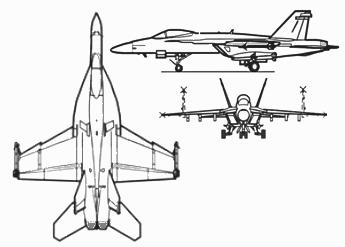
General characteristics
Crew: F/A-18E: 1 (pilot), F/A-18F: 2 (pilot and weapon systems officer)
Length: 60 ft 1¼ in (18.31 m)
Wingspan: 44 ft 8½ in (13.62 m)
Height: 16 ft (4.88 m)
Wing area: 500 ft² (46.5 m²)
Empty weight: 32,081 lb (14,552 kg)
Loaded weight: 47,000 lb (21,320 kg) (in fighter configuration))
Max. takeoff weight: 66,000 lb (29,937 kg)
Internal fuel capacity: F/A-18E: 14,400 lb (6,780 kg), F/A-18F: 13,550 lb (6,354 kg)
External fuel capacity: 5 × 480 gal tanks, totaling 16,380 lb (7,381 kg)
Powerplant: 2 × General Electric F414-GE-400 turbofans
Dry thrust: 13,000 lbf (62.3 kN) each
Thrust with afterburner: 22,000 lbf (97.9 kN) each
Performance
Maximum speed: Mach 1.8 (1,190 mph, 1,915 km/h) at 40,000 ft (12,190 m)
Range: 1,275 nmi (2,346 km) clean plus two AIM-9s[20]
Combat radius: 390 nmi (449 mi, 722 km) for interdiction mission[177]
Ferry range: 1,800 nmi (2,070 mi, 3,330 km)
Service ceiling: 50,000+ ft (15,000+ m)
Rate of climb: 44,882 ft/min[178] (228 m/s)
Wing loading: 94.0 lb/ft² (459 kg/m²)
Thrust/weight: 0.93 (1.1 with loaded weight & 50% internal fuel)[179]
Design load factor: 7.6 g[61]
Armament
Guns: 1× 20 mm (0.787 in) M61A2 Vulcan nose-mounted rotary cannon, 412 rounds[180]
Hardpoints: 11 total: 2× wingtips, 6× under-wing, and 3× under-fuselage with a capacity of 17,750 lb (8,050 kg) external fuel and ordnance
Missiles:
Air-to-air missiles:
4× AIM-9 Sidewinder or 4× AIM-120 AMRAAM, and
2× AIM-7 Sparrow or 2× AIM-120 AMRAAM
Air-to-surface missiles:
AGM-65 Maverick
AGM-84H/K Standoff Land Attack Missile Expanded Range (SLAM-ER)
AGM-88 HARM Anti-radiation missile (ARM)
AGM-154 Joint Standoff Weapon (JSOW)
AGM-158 Joint Air-to-Surface Standoff Missile (JASSM)
Anti-ship missile:
AGM-84 Harpoon
Long Range Anti-Ship Missile (LRASM), in the future
Bombs:
JDAM precision-guided munition (PGMs)
Paveway series of laser-guided bombs
Mk 80 series of unguided iron bombs
CBU-78 Gator
CBU-87 Combined Effects Munition
CBU-97 Sensor Fuzed Weapon
Mk 20 Rockeye II
Others:
SUU-42A/A Flares/Infrared decoys dispenser pod and chaff pod or
Electronic countermeasures (ECM) pod or
AN/ASQ-228 ATFLIR Targeting pods or
up to 3× 330 U.S. gallon (1,200 L) Sargent Fletcher drop tanks for ferry flight or extended range/loitering time or
1× 330 U.S. gal (1,200 L) tank and 4× 480 U.S. gal (1,800 L) tanks for aerial refueling system (ARS).
Avionics
Hughes APG-73 or Raytheon APG-79 Radar
Northrop Grumman/ITT AN/ALE-165 self-protection jammer pod or BAE Systems AN/ALE-214 integrated defensive electronic countermeasures system
Raytheon AN/ALE-50 or BAE Systems AN/ALE-55 towed decoy
Northrop Grumman AN/ALR-67(V)3 radar warning receiver
MIDS LVT or MIDS JTRS datalink transceiver












